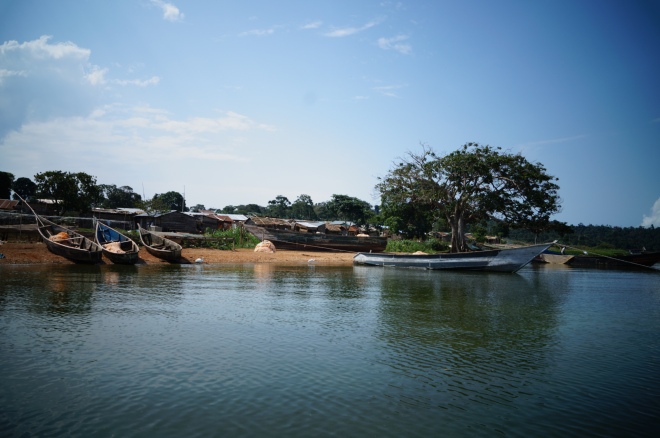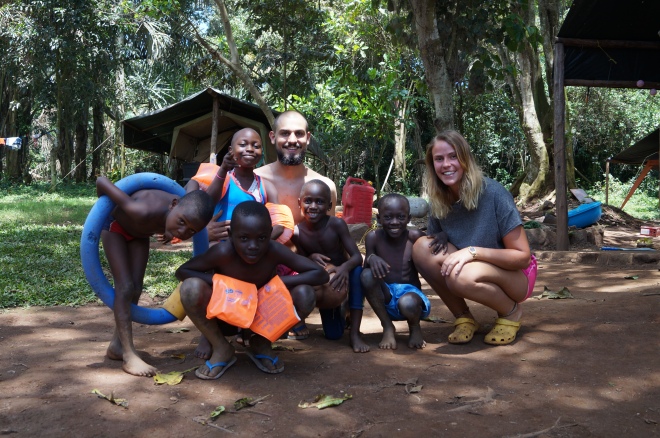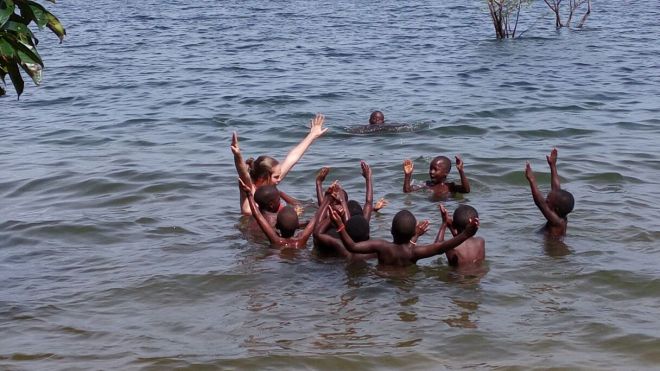Earlier this week we shared the secret behind our toilet composting system. Today, on World Toilet Day 2016, we want to tell you all about why a system like this is so important to us, and why it should matter to you too.
Toilets and water go hand in hand. Building toilets that pollute our water sources is dangerous and counter-productive. Across Uganda, toilets are a rarity and sewage infrastructure is lacking. Building toilets is key to provide people with equal rights and opportunities, to live empowered and dignified lives. But building toilets isn’t enough, we need systems that preserve the water that provides all life.
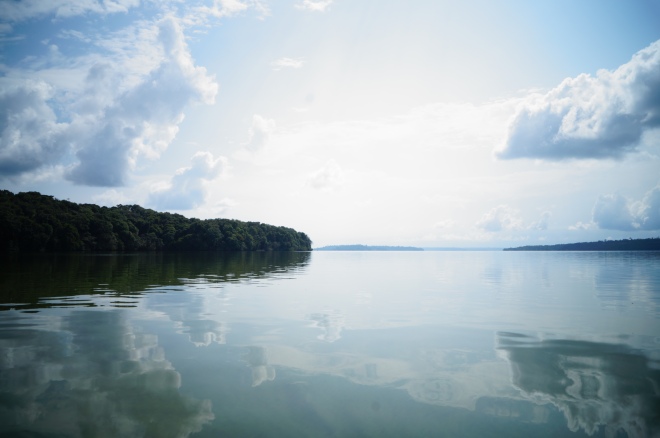
Lake Victoria is the second largest freshwater lake in the world, with a surface area of 68,800 sq km and an average depth of 40m. The area in and around the lake offers rich soil and the ideal climate for agricultural purposes, as well as extraordinary biodiversity with around 500 species of fish, of which more than 50% cannot be found anywhere else.
Lake Victoria is bordered by Uganda, Kenya and Tanzania, with tributaries extending all the way to Rwanda and Burundi. It is estimated that 120,000 fishermen earn a living from it, and 30-40 million people depend on it for economic and living puposes. The lake is not only a source of food, fresh and irrigation water; it also serves a variety of other purposes such as alternative energy and transportation, and consequently serves as a sink for human, agricultural and industrial waste. For this reason the benefits and importance of the lake are not just local, but touch upon the entire global community.
Unfortunately, the consequences of modern living have had a disastrous impact on the well-being of the lake. The exploitation of the lake, caused by a combination of things including over-fishing, urbanisation, pollution and changes in land use have caused serious environmental threats to the lake, with repercussions already being felt by local communities and national economies alike. One of the most-felt consequences of this exploitation is the exhaustion of fish stock: although precise data is hard to come by, it has been calculated that more than 50% of the lake’s native species have already gone extinct, and 200 more are facing possible extinction.
As mentioned above, there are many causes contributing to the destruction of the lake. However, one encapsulates them all: the quality of water in the lake has been progressively declining, and is quickly reaching a critical state. Many areas in and around the lake are considered at severe risk of becoming “dead zones”, as proclaimed by Uganda’s National Environment Management Authority. Murchison Bay, one of the main lake inlets where the national capital Kampala sits, is one of the areas most at risk today:
“Often, Murchison Bay is covered in a green floating blanket of algae that is as viscous as wall paint. Algal blooms clog water treatment plants, deoxygenate lake water causing fish die-offs and cause a skin condition known as swimmers itch. Murchison Bay is home to water treatment plants that supply Kampala city and neighbouring towns.”
(AWE LTD)
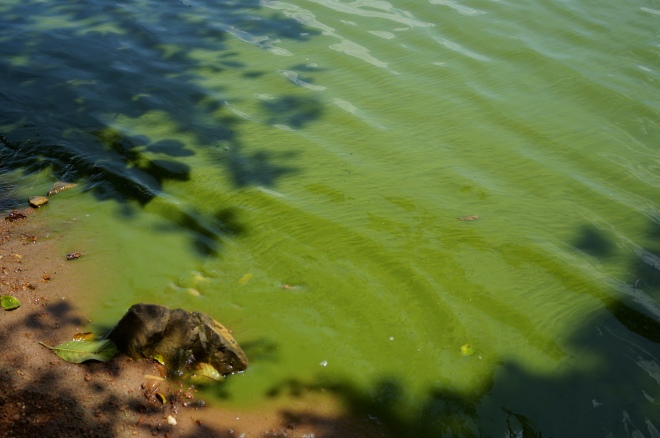
The “green floating blanket of algae” here described is becoming increasingly common throughout the lake, affecting even the most rural areas that contribute least to the pollution. Industrial and domestic waste from major urban areas is regularly discharged into the lake without treatment, whilst the wetlands that once worked as natural cleansers are being destroyed for the purpose of development. The result is clear: water oxygen depletion, increasing water-born diseases for humans and animals and a continuous loss
of the lake’s once rich fisheries and biodiversity.
With 30-40 million people’s lives depending on the quality of its water, preserving the lake’s health is of critical importance:
“Lake Victoria is in danger of becoming the world’s largest pool of dead water.”
(American University)
This is why we built a toilet with a positive impact on the environment, and why all of our projects are developed with that same goal in mind. It is not only important to build an environmentally friendly toilet and water system, but to educate others as we do so. In doing this we hope that we can set an example to the communities of the Ssese region, Uganda and the world which highlights the importance of protecting our water sources.
So why should you care? Lake Victoria is the second largest body of fresh water in the world, which as mentioned earlier not only feeds many countries in the African continent, but also the major source of the Nile river. The Nile is one of the most important and treasured waterways in the world, which means that Lake Victoria indirectly affects 800 million people.
You may not wake up by Lake Victoria each morning, and see the increasing effects of pollution, with the lake turning greener and greener each day. However, it is still crucial that we all take responsibility for the downfall of our water sources. Just because you live in Europe or America or Asia or wherever, it doesn’t mean that you shouldn’t care or can’t help to provide change. If Lake Victoria becomes a dead pool, it is not only the communities that rely on the lake that will suffer, but the entire planet. The world is a beautiful and diverse place that we all have a responsibility to protect. Wether it be your local park, your nearest mountain range or the second largest lake on the other side of the world, we all have the power to work together and protect the environment that we live in.
We all live in this world together, and through education, support and respect, together we can protect this incredible resource that provides for all living things.
We are a small determined organisation that is committed to making global positive impact. The communities around us inspire us with their involvement and commitment every day, and now we need you to get on board too. Have a read of our previous blog posts
for an insight into our work, and look at our website to find out how you can get involved.
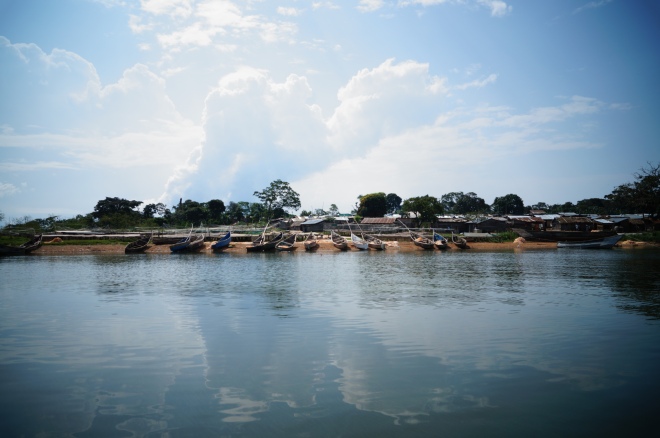
If you are interested in our water Toilet Composting and Water System, please do not hesitate to get in touch at info@fireflyuganda.com
Follow our Facebook and Instagram accounts for regular updates on the progress of our work!
